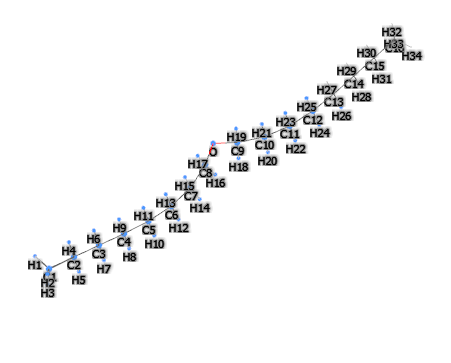Check the ingredients!
... live healthy!


| "Descrizione" by FRanier (9976 pt) | 2022-Nov-14 16:36 |
| Evaluation | N. Experts | Evaluation | N. Experts |
|---|---|---|---|
| 1 | 6 | ||
| 2 | 7 | ||
| 3 | 8 | ||
| 4 | 9 | ||
| 5 | 10 |
Dioctyl ether (INCI name:Dicaprylyl ether) is a chemical compound extracted by a rather complex process involving a catalytic dehydration of octanol-1 in the presence of Cu at a temperature of 195-200°C for 8-12 hours. It can be obtained from palm oil and coconut oil.
It appears as a colourless transparent liquid, stable, flammable and incompatible with strong oxidising agents.

Cosmetics
Used as a moisturising emollient to soften the skin, it enables the formulation of silicon oil-free body care products to improve tactile and sensory sensation.
Emollients have the characteristic of improving the skin barrier through a source of exogenous lipids that adhere to the skin, improving barrier properties by filling gaps in the intercorneocyte clusters to improve hydration while protecting against inflammation. Emollients are described as degreasing or refreshing additives that improve the lipid content of the upper layers of the skin by preventing degreasing and drying of the skin. The problem with emollients is that many have a strong lipophilic character and are identified as occlusive ingredients; they are oily and fatty materials that remain on the skin surface and reduce transepidermal water loss. In cosmetics, emollients and moisturisers are often considered synonymous with humectants and occlusives.
It is also added as a generic excipient.
Medical
In the pharmaceutical industry it is used in dermatological formulations as an emollient (1).
Other uses
It has rheological properties to improve fluid flow (2).
For more details:
Typical commercial product characteristics Dicaprylyl ether
| Appearance | Colorless liquid |
| Boiling Point | 286-287°C |
| Melting Point | −7.6° |
| Flash Point | >110°C |
| Density | 0.806 g/mL at 25°C |
| Refraction Index | n20/D 1.433 |
| PSA | 9.23000 |
| LogP | 5.72400 |
| Loss on drying | ≤0.5% |
| SO4 | ≤0.1% |
| Cl | ≤0.01% |
 |  |
 |  |
Synonyms :
References___________________________________________
(1) Marcato B, Guerra S, Vianello M, Scalia S. Migration of antioxidant additives from various polyolefinic plastics into oleaginous vehicles. Int J Pharm. 2003 May 12;257(1-2):217-25. doi: 10.1016/s0378-5173(03)00143-1.
(2) Kirilov P, Gauffre F, Franceschi-Messant S, Perez E, Rico-Lattes I. Rheological characterization of a new type of colloidal dispersion based on nanoparticles of gelled oil. J Phys Chem B. 2009 Aug 13;113(32):11101-8. doi: 10.1021/jp905260s.
| Evaluate |